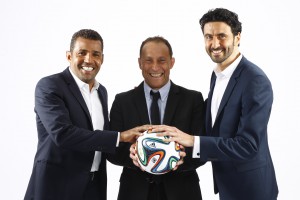The French Connection for World Cup coverage
Rights for broadcasting the World Cup in France – and French territories around the world – are shared by BeIN Sports and TF1. “We will have two studios in Brazil,” states Bernard Pichaud, production director, BeIN Sports France. “One, measuring 300 square metres, will be integrated within the IBC facilities, while another will be located in Copacabana with an amazing view over the bay. Our commentators and analysts will all be on-site in Brazil.”
In addition, a spectacular set will be built within a 900 square metre studio at the broadcaster’s main production facility in Doha. “This studio is one of the biggest and smartest studios for sport presentation in the world and offers a tremendous number of technical possibilities. We plan three different locations within the studio for our different type of presentations. We believe our audience deserves the best.”
Pichaud reveals that for the Brazilian operation, the broadcaster will be utilising its own crew and equipment with help from service provider Media Pro. “We will have approximately 250 people on site, including editors, directors, production personnel, commentators, presenters, and ENG crews. Plus, more than 50 persons will be deployed in Doha for all other studio coverage.”
He goes on to say that production staff will have access to data services such as FIFA MAX and Magma Pro in order to provide viewers with as much information as possible. FIFA MAX (Media Asset Exchange) Server provides users with access to tournament-related footage from a dedicated library. Magma Pro enables graphics showing official match or tournament data in different sizes up to full-frame to be presented within seconds.
“For match coverage we will take the pool feed into a dedicated OB truck that will allow us to insert our own content from the mix zones and flash interview areas, and then dispatch the signal directly to the IBC. We will have our own EVS operators for every show, but we will also be focus on getting the maximum use of the very rich selection of feeds and compilations created by the host broadcaster and then customise them for our own description of the events.”
Alongside the television coverage, beIN Sports has developed its own interface for web streaming. This content will include multi camera angles and will also embrace a significant number of widgets for statistics.
He concludes: “Engineering and production wise the environment is very well known to all our technicians and production managers, and we, as a group, have a great deal of experience as a host broadcaster, so we are able to capitalise on that background for a major event such as the World Cup.”

